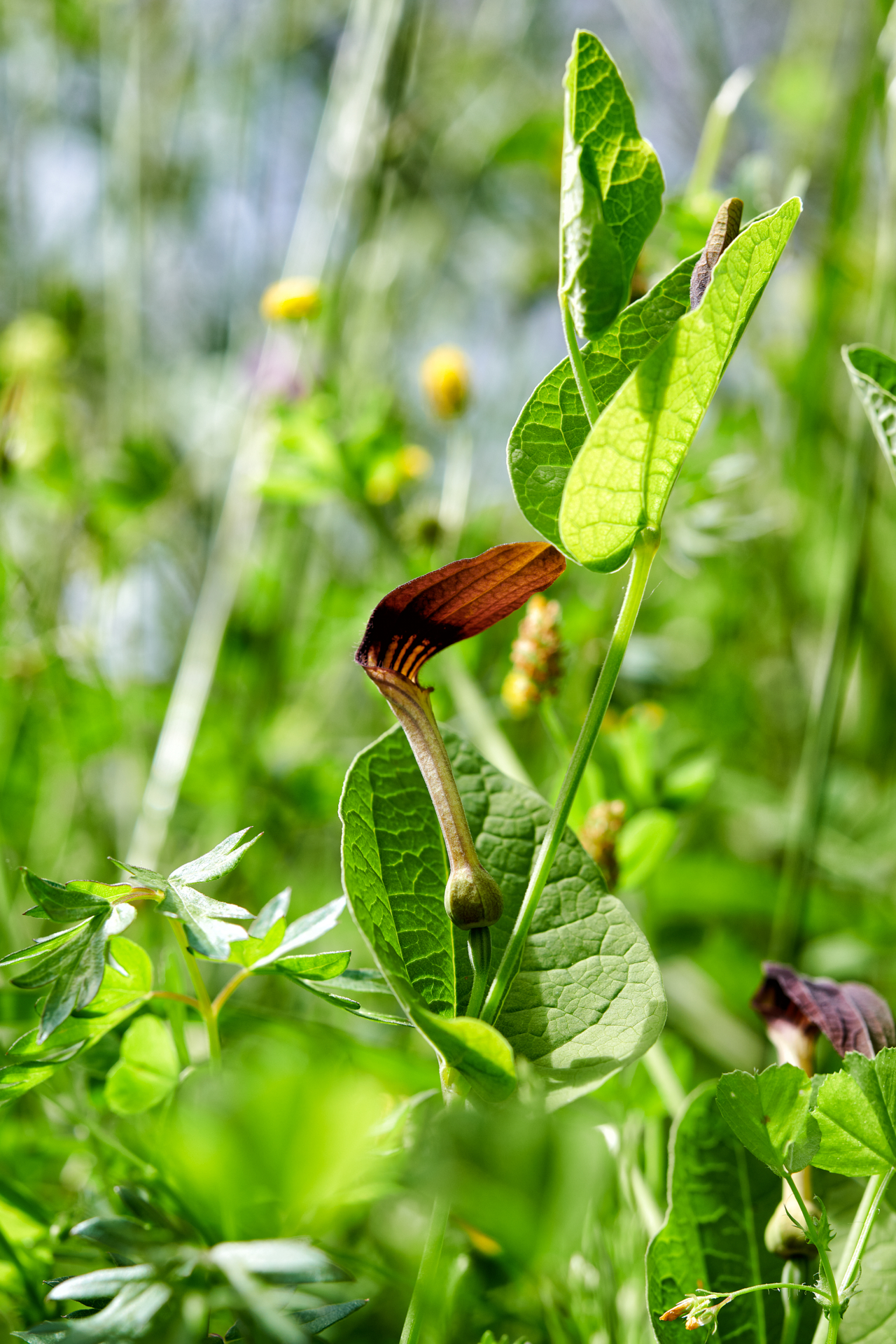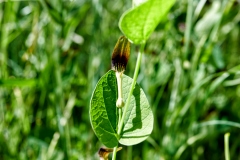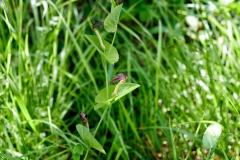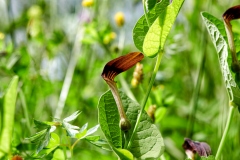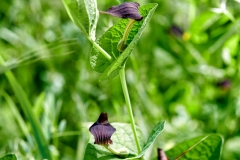Pollination, prisoners, pitchers & pipes — Aristolochia, a fascinating plant
Pollination, prisoners, pitchers & pipes is a nice example of alliteration but each of those words is there for a reason as we’re about to find out …
Pitchers
A few years ago, I came across a wildflower while walking the coast of Liguria. The plant was not one that I recognised and, more surprising, the flowers were nothing like anything I was familiar with in Europe. In fact, they reminded me instantly of the insectivorous pitcher plants that you see in tropical greenhouses. Yet I knew they were not true pitcher plants. Being horticulturally trained, I usually understand which family or group of families a plant that is new to me belongs to. But not this time.
Pipes
I eventually identified it as a species of Aristolochia — Aristolochia rotunda, to be precise. I should have realised sooner because I already knew of the Dutchman’s pipe, Aristolochia macrophylla, from my college days. But I didn’t know that the genus was present as a native plant in Europe. I now understand that Dutchman’s pipe or pipevine are common names for pretty much every species within the genus. The reason being that their flowers resemble a Meerschaum pipe.
But there’s another dimension to the pipe connection. The Aristolochia family is in the taxonomic order, Piperales, that contains the pepper plants that give us black pepper. The very word pepper (along with its genus, family and order) is derived from the Sanskrit word pipalli that was used to describe the pipe-shaped or long pepper, Piper longum.
Prisoners as pollinators
Real pitcher plants use their flowers to capture flies as food. The Aristolochia’s flowers use the same kind of technique but for a very different purpose. Their flowers are attractive to flies but the flies have to work their way down the tube to get to the nectar. The inside of the tube is covered in stiff downward pointing hairs that trap the fly. As it tries to find a way out, it covers itself in pollen and a reaction in the flower causes the hairs to wither. The fly is able to escape and carry the pollen to fertilise another plant.
All of which brings us neatly to the subject of reproduction.
POLLINATION, PRISONERS, PITCHERS & PIPES — A STORY OF REPRODUCTION
The common link in this article is one of fertility and reproduction. We’ve already seen how the plant has evolved to increase its chances of being fertilised. But it has long been associated with reproduction for other reasons.
For thousands of years, and across countless civilisations, herbs have been at the heart of medicine. A recurring theme has been the idea that, if some part of a plant looks similar to a part of the human body, then it has the potential to cure ailments that affect that part of the body. And one of Aristolochia’s properties is that its flowers resemble a uterus. Hence its common name, birthwort. Preparations made from various Aristolochia species have been used to assist in childbirth (particularly to help expel the placenta) and have also been used to promote menstruation. These practises are no longer used and a good thing too because the genus is known to contain the deadly toxin, aristolochic acid. Take note, the genus is also carcinogenic and ingestion can cause kidney failure.
Gallery
Notes: There are several species of Aristolochia that grow in Europe with Aristolochia rotunda being the most common in the part of Italy where I live. It’s a low growing and quite untidy plant that is easy to overlook. Even when seen, it requires close inspection to fully appreciated its little pitcher-shaped flowers. Many of the worldwide species are climbers with large showy flowers, some of which are cultivated as garden or greenhouse plants. Common names include: birthwort, pipevine, and Dutchman’s pipe.
Pollination, prisoners, pitchers & pipes — metamorphosis
Metamorphosis in insects is, of course, another example of a reproductive cycle, and one that is very complex. The butterfly life cycle rotates from egg to larva to pupa to imago and back to egg. At every stage there’s the need to survive. Beautiful as adults, these invertebrates spend most of their active lives as caterpillars and it is during this stage that they most need to eat, and are most likely to be eaten. Consequently, the relationship between butterflies and their food plants is key to their survival.
Aristolochia is an important food plant for the larvae of many species of swallowtail butterfly. Here in southern Europe, it’s the food plant of the southern festoon butterfly, Zerynthia polyxena, caterpillars. As we’ve already discovered, the leaves are poisonous, but this is one of those cases where the insect larvae benefit from eating toxic leaves as it makes them unpalatable to predators.
In the fourteen years that I’ve lived here, I have only ever seen three individual adult butterflies and only one of those settled long enough to get the shot below. I have also been checking Aristolochia plants for larvae or pupae but with no luck so far. One positive, though, is that I’ve finally found a colony of Aristolochia growing in a nearby olive grove so maybe this year …
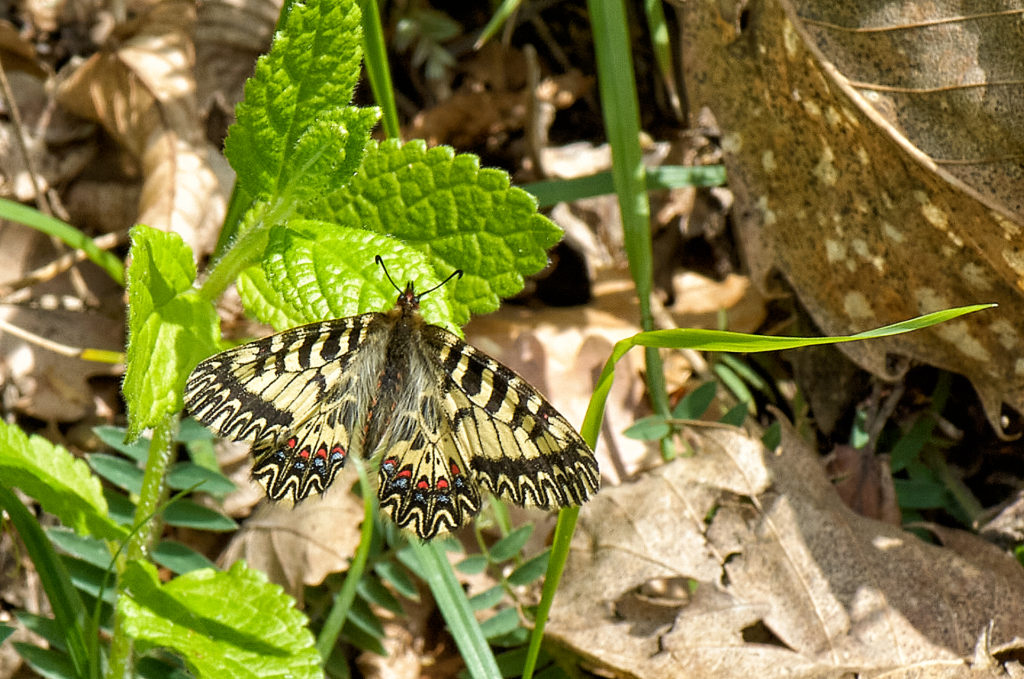
Parting shot
The MYTH is that the shape of a plant determines its healing properties. The MYST is the mystery of evolution …
We understand evolution — in principal, at least — but there are times when the mechanics of the changes that determine, not just new species, but the entire richness of organic life, seems almost too much to believe. I suspect the issue for us humans is that we perpetually struggle to find a comparative model that might enable us to comprehend the enormity of time that has enabled so many small changes to result in all the life on Earth that we see today.
